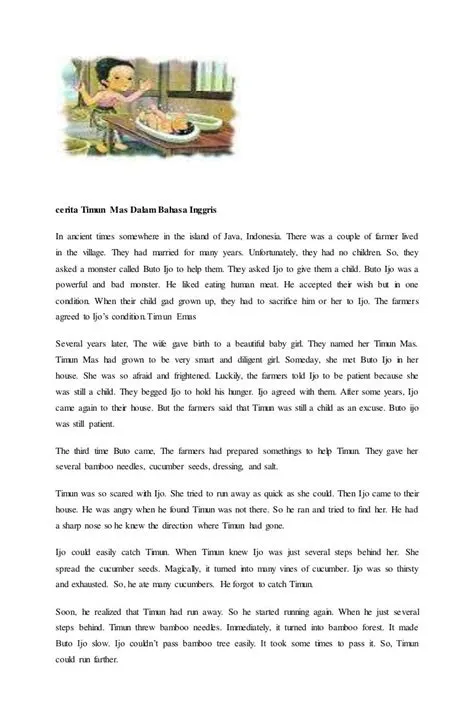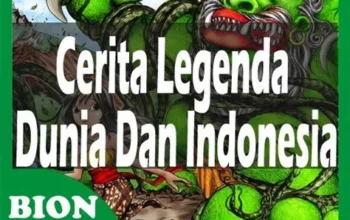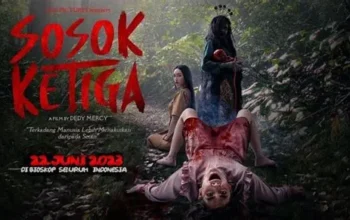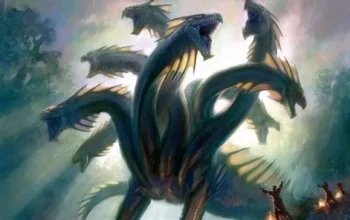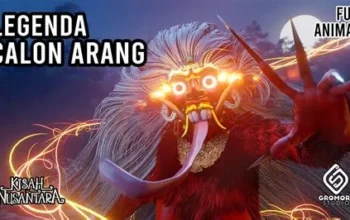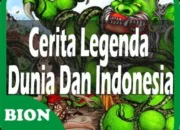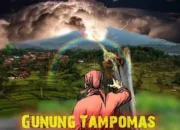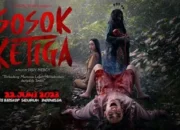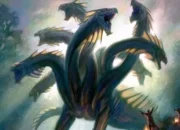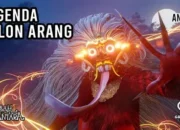A Warm Welcome to the World of English Legends
Discovering the Roots of Storytelling
Sobat Dewakata.com, ever wondered about the whispers carried on the wind, the echoes in ancient stones, the tales passed down through generations? These aren’t just stories; they’re the vibrant threads that weave the tapestry of English culture. We’re diving into the enchanting world of English legends, uncovering their hidden depths and exploring the magic they hold. We’ll journey through time, unraveling the mysteries behind these captivating narratives and discovering how they continue to shape our understanding of ourselves and the world around us.
The Allure of the Legend: Why We Still Tell These Tales
Why do these age-old stories continue to resonate with us? It’s more than just nostalgia; it’s the human need to connect with something larger than ourselves, to explore the themes of good versus evil, love and loss, courage and sacrifice. English legends offer a unique window into the collective consciousness, reflecting the hopes, fears, and aspirations of generations past. They also help us understand the historical, geographical, and social contexts that shaped the narrative. Think of it as a historical puzzle box, where every legend is a piece, fitting into a larger picture of a nation’s identity.
Unveiling the Power of Myth and Symbolism
From the majestic King Arthur to the mischievous Robin Hood, these characters are more than just fictional beings; they’re potent symbols. They embody ideals and values, often reflecting the cultural climate of their time. The symbolism woven into these narratives often holds deeper meaning, inviting us to examine our own beliefs and values. Analyzing the symbolism provides us with a richer, more nuanced understanding of the legend itself and its impact on society.
From Folklore to Fiction: Tracing the Evolution of English Legends
Many English legends started as humble folk tales, passed down orally from generation to generation. Over time, these stories evolved, adapting and transforming to reflect changing social norms and literary styles. This journey from oral tradition to written text is fascinating, providing insight into the dynamic nature of storytelling itself. We’ll look at how these stories were adapted and reinterpreted throughout history, and how they have made their mark on literature, art, and popular culture.
The Arthurian Cycle: Knights, Magic, and a Round Table
King Arthur: More Than Just a Myth
King Arthur, the iconic figure of chivalry and courage, is more than just a legendary king; he’s a symbol of the ideals of knighthood and the quest for justice. But his story is not without its complexities. His kingdom, Camelot, is often depicted as a utopia, yet Arthur’s reign was filled with challenges, betrayals, and ultimately, tragedy. Analyzing Arthur’s journey reveals a deeper understanding of the aspirations and anxieties of medieval society.
Merlin’s Magic: The Enchanting Sorcerer
Merlin, Arthur’s wise and enigmatic mentor, adds a layer of mystical intrigue to the Arthurian legend. His magical abilities and prophetic powers highlight the importance of magic and divination in medieval belief systems. We’ll delve into the different depictions of Merlin throughout history, examining his role in shaping Arthur’s destiny and the enduring fascination with his enigmatic persona.
The Knights of the Round Table: A Brotherhood of Chivalry
The Knights of the Round Table are not merely a group of valiant warriors; they embody the ideals of chivalry, loyalty, and honor. Their adventures and quests highlight the importance of these virtues in medieval society, and the consequences when those virtues are compromised. Each knight had their own unique story, adding to the complexity and richness of the Arthurian legend. This wasn’t just a club; it was a reflection of society’s expectations of honorable behavior.
Guinevere and Lancelot: A Love Story of Betrayal
The tragic love story between Guinevere and Lancelot is a compelling element of the Arthurian legend, exploring the themes of love, betrayal, and the devastating consequences of forbidden desires. Their relationship shakes the foundations of Camelot and ultimately contributes to Arthur’s downfall. This dramatic story speaks to the timeless tension between passion and duty, and the complexities of human relationships.
Robin Hood and Sherwood Forest: A Tale of Rebellion
The Outlaw Hero: Defying Authority
Robin Hood’s legend is a testament to the enduring appeal of rebellion against tyranny. He stands as a symbol of resistance to unjust authority, representing the common people’s struggle against oppression. His actions, though often violent, were seen as justified within the context of his social setting. What might have seemed like banditry was presented as a necessary fight for social justice.
Maid Marian: More Than Just a Damsel
Maid Marian is often overlooked as a mere love interest, but she’s a crucial part of Robin Hood’s story. She represents courage, resilience, and a willingness to fight for what’s right. She’s a testament to the powerful role women played – even if only in a supporting role – during a time of social upheaval. Her presence adds depth and complexity to the narrative, highlighting a softer side to the rebellion.
The Merry Men: A Band of Loyal Companions
Robin Hood’s band of Merry Men is more than just a group of outlaws. It’s a brotherhood, bound together by loyalty and a shared commitment to justice. Each member possessed unique skills, providing a diverse and balanced team capable of challenging the Sheriff’s forces. This reinforces the power of teamwork in the face of adversity and reflects the importance of communal bonds in times of trouble.
Sherwood Forest: A Sanctuary of Rebellion
Sherwood Forest itself plays a vital role in the Robin Hood legend. It serves as a sanctuary for the outlaws, providing protection and concealment. More than simply a setting, Sherwood Forest is a character within the legend, symbolic of nature’s ability to provide refuge and harbor resistance against tyranny.
Other Notable English Legends
Beowulf: The Epic Hero
Beowulf, an Old English epic poem, recounts the tale of a brave warrior who fights monstrous creatures to protect his people. This legend embodies courage, strength, and the heroic ideals of Anglo-Saxon culture. While not strictly a “fairy tale,” its place in the literary canon and its continuing cultural relevance cement its position as a foundational English legend.
The Legend of St. George: The Dragon Slayer
The legend of St. George and the Dragon is a globally recognized story, and its English roots are deeply entrenched. This story speaks to the triumph of good over evil, and the courage required to face seemingly insurmountable challenges. It’s a timeless narrative that transcends cultural boundaries, and its enduring popularity reflects our need for heroic figures to inspire us.
Jack the Giant Killer: A Tale of Cleverness
Jack the Giant Killer is a classic English fairy tale that celebrates wit and cunning over brute force. It’s a fun and exciting story, yet it also holds a deeper meaning about facing our fears and believing in our own abilities. The story reflects the enduring human desire to overcome the seemingly impossible, highlighting the power of resourcefulness.
Tom Thumb: The Tiny Hero
The story of Tom Thumb is one of the oldest and most enduring English legends. This classic tale celebrates the triumph of the small and seemingly insignificant over the large and powerful. His cleverness and bravery, despite his size, makes him a memorable character, and the story has been told and retold for centuries.
The Enduring Power of Storytelling
Why Legends Matter
Sobat Dewakata.com, as we’ve journeyed through these captivating stories, it’s clear that English legends are far more than just tales of old. They are mirrors reflecting our history, our values, and our enduring fascination with heroism, magic, and the power of storytelling itself. They provide a rich tapestry of cultural heritage and a compelling window into the human experience.
The Legacy of English Legends
From influencing modern literature and art to shaping our cultural identity, these legends continue to exert a powerful influence on our world. They have inspired countless works of art, movies, and even video games, demonstrating the lasting impact of these fascinating stories.
Keeping the Stories Alive
The best way to keep the magic of English legends alive is to share them with future generations. Let’s continue to tell these stories, to pass them down, to ensure that these rich narratives are cherished and understood for generations to come. We’re the storytellers now, and the power to shape future narratives is in our hands.
Conclusion: Embrace the Magic
So, Sobat Dewakata.com, what’s your favorite English legend? Share it in the comments below! Let’s continue this conversation and uncover more of the hidden wonders within these captivating tales. Perhaps you’ll even be inspired to write your own legendary story!
Call to Action: Share the Magic!
Share this article with your friends and family, especially those who appreciate a good story! Let’s spread the enchantment and keep the legacy of English legends alive.
Frequently Asked Questions (FAQ)
Q1: Are English legends solely based on historical events?
A1: No, while some legends may have roots in historical events, most blend historical elements with fantasy and mythology. They often serve as symbolic representations of cultural values and beliefs, rather than literal historical accounts.
Q2: How have English legends evolved over time?
A2: English legends have constantly evolved, adapting to changing societal norms and beliefs. Oral traditions morphed into written forms, and interpretations of the same stories shifted across centuries, reflecting evolving values and perspectives.
Q3: What is the significance of symbolism in English legends?
A3: Symbolism is crucial in English legends. Characters, objects, and settings often carry deeper meanings, representing abstract concepts like good vs. evil, justice, and the human condition. Understanding this symbolism enhances our understanding of the stories.
Q4: Can modern stories be considered “legends”?
A4: While legends typically have a historical or mythical depth, the potential for modern stories to attain legendary status exists. It depends on their cultural impact and their ability to resonate with generations to come.
Q5: How do English legends compare to legends from other cultures?
A5: While there are parallels in themes (good vs. evil, heroism, etc.), English legends have unique characteristics reflecting the island nation’s history, geography, and social developments. Comparison with legends from other cultures reveals fascinating similarities and differences in how people weave narratives about their pasts.



